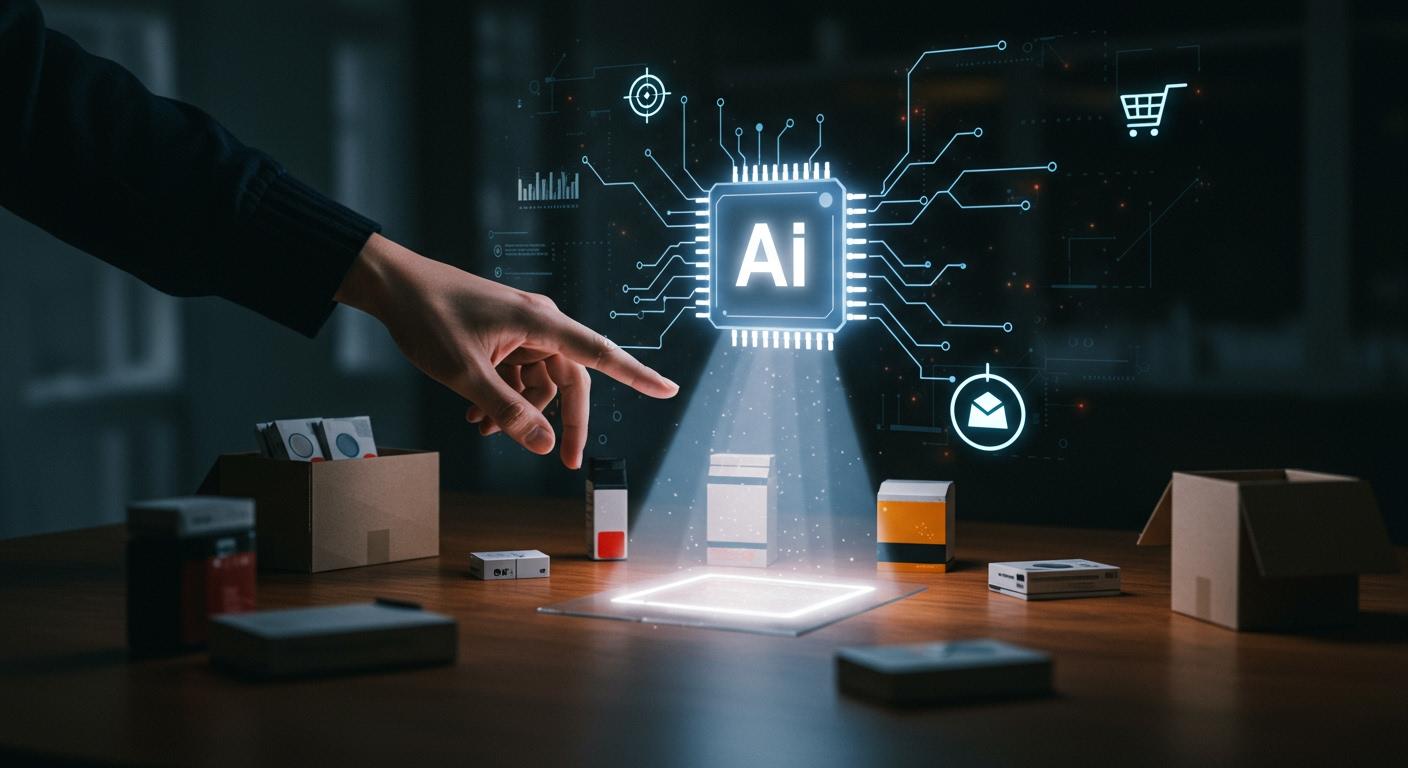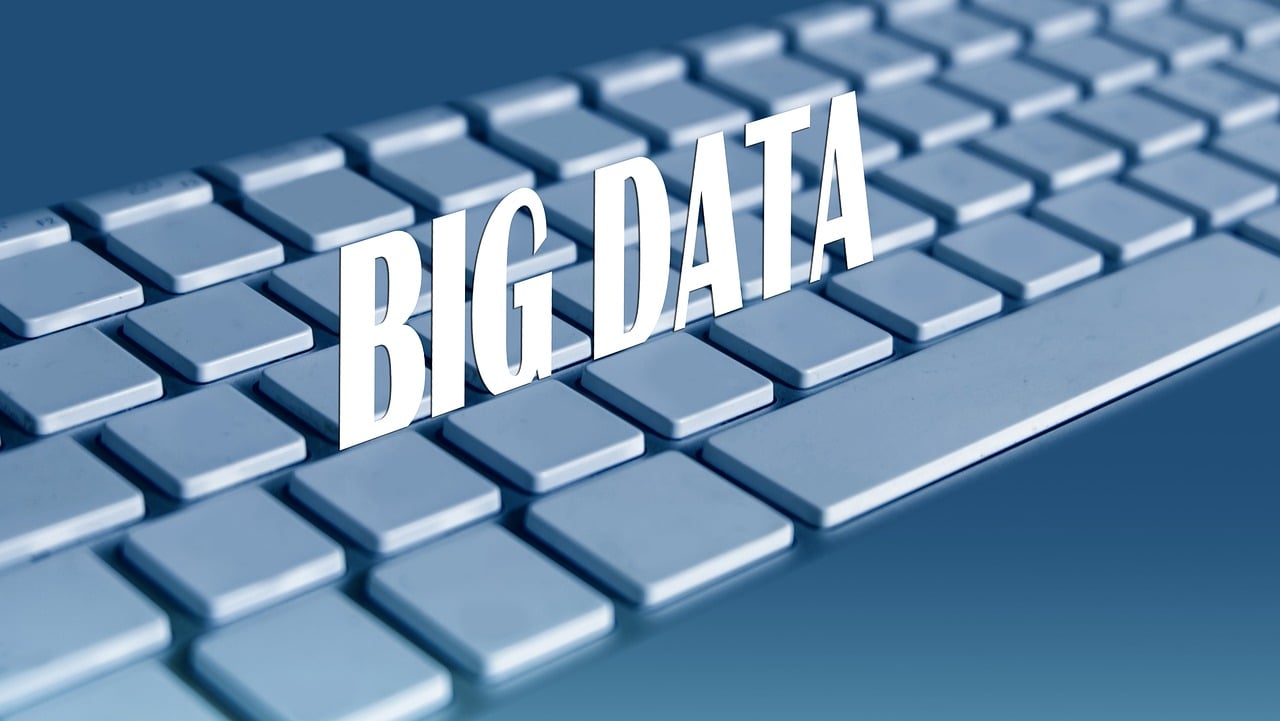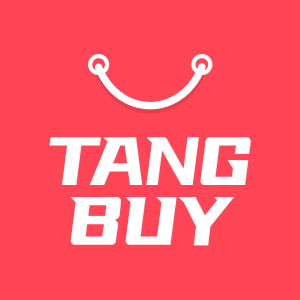Stop Guessing Products: How AI Can Find Your Next Winner

You want to Stop Guessing Products and finally pick winners with confidence. Guesswork can leave you feeling frustrated and unsure. AI changes that. It scans huge amounts of data to spot trends you might miss. You do not need to run a big company to use these tools. AI makes smart product choices possible for everyone, no matter your business size.
Key Takeaways
Do not just guess. Use AI to help you pick products with real facts.
Learn what your customers want. AI can spot trends and likes that you may not see.
Do not make expensive errors. AI checks lots of data fast, so you avoid selling things people do not want.
Get updates right away. AI changes with the market, so you can follow what customers do.
Use AI to get useful ideas. AI tools can help you think of products and pick the best ones by what people want.
Pick the best AI tools. Find ones that fit your business and help you grow.
Teach your team well. Give them help and practice so they feel sure using AI tools.
Check how well you are doing often. Watch how you use AI and ask for feedback to make sure it helps your business.
Stop Guessing Products
Why Guessing Fails
You might feel tempted to trust your gut when picking new products. Many business owners do the same. But guessing often leads to disappointment. When you guess, you miss out on real data. You risk launching products that nobody wants or needs.
Let’s look at some common reasons why guessing fails:
You may not understand what your customers actually want. Without proper research, you can miss key needs or trends.
Sometimes, the product does not solve a real problem. If there is no urgent need, people will not buy.
You might struggle to explain why your product is better or different. A weak value proposition makes it hard to stand out.
Timing matters. Launching too early or too late can ruin your chances.
If you do not have a clear marketing plan, your product may never reach the right people.
Pricing mistakes are common. Too high, too low, or confusing prices can turn customers away.
Poor quality or a confusing user experience can lead to bad reviews and lost sales.
If your product looks like every other option, customers will not notice you.
Teams that do not work together can slow down progress and create confusion.
Ignoring feedback means you miss chances to improve before and after launch.
Spending too much or not planning your budget can drain your resources.
Guessing is like throwing darts in the dark. You might hit the target once, but most of the time, you miss.
Pitfalls of Intuition
You might believe that intuition helps you spot the next big thing. Sometimes, a lucky guess works. Most of the time, though, relying on your gut leads to costly mistakes. Intuition can trick you into thinking you know what customers want. In reality, your own preferences might not match the market.
Manual research takes a lot of time. You can spend hours looking at trends, reading reviews, and checking competitors. Even then, you might miss important details. You risk missing out on new opportunities because you cannot scan as much data as AI can.
When you Stop Guessing Products, you save money and time. You avoid launching products that flop. You also spot trends before your competitors do. With the right tools, you can make smarter choices and grow your business faster.
AI Transformation
Data-Driven Insights
You want to make smart choices, not just lucky guesses. AI helps you do that by giving you data-driven insights every day. Instead of relying on your gut, you get facts and figures that show what’s really happening in the market. AI scans huge amounts of information from all over the world. It looks at global research data, full-text publications, grants, and even policy documents. You get a complete picture, not just a snapshot.
AI can analyse vast datasets from many sources. It finds patterns and trends that you might miss if you did everything by hand. You see what customers want, what’s selling, and what’s about to become popular. This means you can plan ahead, not just react when things change. You save time and avoid mistakes. You also free up your team to focus on the most important tasks.
Here’s how AI compares to manual methods:
Aspect | AI-Driven Metrics | Manual Methods |
|---|---|---|
Speed of Evaluation | Time-consuming | |
Accuracy of Detection | High accuracy in defect classification | Prone to human error |
Focus on Priorities | Frees up resources for critical tasks | Often bogged down by extensive checks |
AI lets you Stop Guessing Products and start making decisions based on real evidence.
Real-Time Analysis
Markets change quickly. You need to keep up. AI works in real-time, so you always have the latest information. It watches customer behaviour and updates its recommendations instantly. Big companies like Amazon and Netflix use AI to change their product suggestions as soon as users interact with their platforms. You can do the same, no matter your business size.
AI adapts to market changes right away. It learns from new data and updates its predictions. You get faster, more accurate forecasts. This helps you match supply with demand and avoid running out of stock or over-ordering. You can see what’s trending now, not just what was popular last month.
Here’s what happens when you use AI for real-time analysis:
AI analyses customer interactions as they happen.
It updates product recommendations based on new behaviour.
You get suggestions that fit the current market, not outdated trends.
With AI, you stay ahead of the curve and make choices that keep your business growing.
If you want to Stop Guessing Products and start winning, real-time AI is your best friend. You get the right products in front of the right people at the right time.
AI Process
You might wonder how AI actually helps you Stop Guessing Products and start picking winners. Let’s break down the process into three simple steps: data collection, analysis, and turning insights into action.
Data Collection
AI starts by gathering information from many places. You do not have to search for everything yourself. AI does the heavy lifting for you.
Sources
AI pulls data from a wide range of sources. Here are some common ones:
Customer reviews and feedback
Social media posts and trends
Sales data from your shop and competitors
Market research reports
Online forums and communities
Policy documents and grants
You get a full picture of what’s happening in your market. AI can even scan research papers and news articles to spot new ideas.
Types
AI collects different types of data. This helps you see the whole story.
Text: Comments, reviews, and articles
Numbers: Sales figures, ratings, and prices
Images: Product photos and social media posts
Audio: Meeting recordings and customer calls
You do not need to worry about missing out on important details. AI brings all this data together for you.
Analysis

Once AI collects the data, it starts to make sense of it. This is where the magic happens.
Trends

AI looks for patterns in the data. It finds out what people are talking about and what products are getting attention. You can spot trends before they become mainstream. For example, AI can show you which products are rising in popularity on social media or which features customers mention most in reviews.
Demand
AI also checks how much people want certain products. It looks at sales numbers, search trends, and even how often people ask questions about a product. You get a clear idea of what’s in demand right now. This helps you avoid products that are losing interest and focus on those that are gaining traction.
Here’s a quick look at how AI moves from raw data to useful insights:
Phase | Key Actions |
|---|---|
Implement AI-assisted research synthesis | Transform raw research data into actionable insights. Identify themes and connect insights from different sources. Highlight gaps needing more research. |
Deploy collaborative AI for stakeholder alignment | Create documents for different teams. Map out how changes affect everyone. Build agreement quickly with AI-powered voting. |
Continuous learning and optimisation | Track how your choices perform. Find ways to improve your process. Use past data to predict future trends. |
AI does not just collect data. It helps you understand what matters most and where you should focus next.
Actionable Insights
Now you have the data and the analysis. What do you do next? AI gives you clear steps to take.
Product Ideas
AI can suggest new product ideas based on what it finds. For example, tools like ProdPad summarise long customer feedback into simple, actionable points. Sembly AI listens to meetings and pulls out the best ideas. Maze uses AI to make surveys smarter and helps you spot what customers really want.
They highlight what customers love and what they wish was better.
You get a list of product ideas that match real needs.
Prioritisation
You might have lots of ideas, but you cannot do everything at once. AI helps you decide which products to promote or stop. It looks at demand, competition, and your own strengths. You see which ideas have the best chance of success.
Here’s how some popular AI tools help you turn insights into action:
AI Tool | Key Features |
|---|---|
Comprehensive AI Insight Platforms | Analyse feedback, spot trends, and surface the best ideas |
ProdPad | Turn long feedback into clear action points |
Sembly AI | Pull out key insights from meetings |
Maze | Make surveys smarter and speed up decisions |
AI helps you focus on products that will grow your business.
You can stop wasting time on ideas that will not work.
You make decisions faster and with more confidence.
With AI, you Stop Guessing Products and start building a product line that customers actually want.
Practical Success

E-commerce Example
You might ask if AI really helps in real life. Many online shops have seen big changes by using AI to choose top products. Let’s see how some famous companies use AI every day:
Company | AI Application Description | Impact on Sales |
|---|---|---|
Amazon | Uses a recommendation engine analysing customer behaviour to suggest products. | Generates 35% of total sales from recommendations, boosting average order value and customer loyalty. |
Shopify | Implements AI-based upselling to tailor shopping experiences for merchants. | Increases sales per transaction and reduces manual work for merchants. |
Lenskart | Utilises AI-powered virtual try-on technology for eyewear shopping. | Enhances buyer confidence, reduces returns, and makes eyewear more accessible. |
Forever 21 | Adopts dynamic pricing algorithms to adjust prices in real-time based on various factors. | Maximises revenue and improves inventory turnover, staying competitive in fast fashion. |
These companies use AI to make better decisions. They do not just guess what people want. They use facts to see what sells best and when to offer it. This helps them grow quickly and serve customers well.
Influencer Discovery
AI is not only for shops. It also helps influencers and brands find new trends. Many marketers now use AI to spot what is popular and match products with the right influencers. Here is what is happening now:
60.2% of people use AI to find influencers and improve campaigns.
66.4% of marketers say AI makes their campaigns work better.
AI tools check how people react to posts. You can see which products get the most likes, shares, or comments.
Brands use AI to find influencers who care about things like sustainability or fashion.
AI uses smart tools like Natural Language Processing and machine learning. These tools read posts and comments to find what is popular. You can see which products are trending and who is talking about them. This means you can work with the right people and reach the right audience.
Lessons
You can learn a lot from businesses that use AI well. Here are some important lessons:
Set clear goals before you start using AI. Know what problem you want to solve.
Make sure you have good data. AI works best when it has lots of accurate information.
Get your team ready for change. Teach them how to use new tools and show them the benefits.
Do not worry if things do not work the first time. Learn from mistakes and try again.
When you use AI, you Stop Guessing Products and start making choices that help your business grow. You can spot trends, find the right partners, and build a product line that customers love.
Tool Selection
Choosing the right AI tool for your business can feel overwhelming. You want something that fits your needs, grows with you, and does not break the bank. Let’s break down what to look for so you can make a smart choice.
Features
When you pick an AI tool, focus on features that help you reach your goals. Not every tool will suit your business, so it’s important to know what matters most.
Integration Capabilities: Make sure the tool works well with your current systems. This saves you time and keeps your workflow smooth.
Security and Compliance: Look for tools that follow rules like GDPR or HIPAA. Your data stays safe, and you avoid legal trouble.
Scalability: Choose a tool that can grow as your business grows. You do not want to switch tools every year.
Feature Prioritisation: Use frameworks like Weighted Scoring or RICE to decide which features matter most for your business.
User-Centred Design: Pick tools that are easy for your team to use. If your team likes the tool, they will use it more.
Real Metrics: Go for tools that give you clear, objective data. This helps you make better decisions.
Early Validation: Some tools let you test ideas quickly. You get feedback fast and can adjust before spending too much.
Tip: Always check if the tool supports your long-term business goals, not just your current needs.
Comparison

Not all AI tools work the same way. Some shine in certain areas, while others have their own strengths. Here’s a quick look at how some popular tools compare:
Tool | Strengths | Weaknesses |
|---|---|---|
Elicit | Very accurate for academic research | Not great for current events or trends |
ChatGPT | Deep reasoning and analysis | Accuracy can vary |
Wide coverage and up-to-date info | Lacks deep analysis | |
Perplexity | Good balance of depth and relevance | May not specialise in one area |
You might find Elicit helpful if you need solid research. ChatGPT works well when you want detailed answers. Google gives you a broad view, while Perplexity offers a mix of depth and relevance. Think about what your business needs most before you decide.
Cost
You do not need a huge budget to get started with AI tools. Most small businesses spend between $200 and $800 per month on these tools. The price depends on your team size and which features you need. Even at the lower end, you can find tools that boost your business and save you time.
Most tools offer different plans. You can start small and upgrade as you grow.
Some tools bundle features, so check what’s included before you buy.
Investing in the right tool can save you money in the long run by helping you avoid costly mistakes.
Remember: The best tool is the one that fits your needs, supports your team, and helps you reach your goals.
Workflow Integration
Getting Started
You want to bring AI into your business without causing chaos. Start by looking at your current processes. Ask yourself what problems you face and where AI can help. Set clear goals for what you want to achieve. Research different AI tools and check if they fit with your existing systems. Pick the models that match your needs best.
Here’s a simple way to get started:
Assess your business needs. Spot the areas where AI can make a difference.
Define your goals. Decide what you want AI to do for you.
Research and identify the right technologies. Make sure they work with your current setup.
Choose the best AI models. Find ones that suit your business.
You might worry about old systems not working well with new AI tools. Many businesses face this challenge. You can build modern API layers around legacy systems. This helps old and new systems talk to each other. Try phased integration. Begin with less critical systems and move to the important ones later. Upgrade your data structure so both legacy and AI tools work together smoothly.
Tip: Start small and test before you roll out AI everywhere. This keeps things simple and reduces risk.
Training
Your team needs to feel confident using AI tools. Training makes this possible. You can find many resources to help everyone learn. There are short video introductions to AI, hands-on modules for everyday tasks, and practical strategies for lean product teams. Some courses teach you how to write prompts and use AI for product management.
A 50-minute video introduction to AI and prompt writing
Modules for using AI in daily work
AI Skill Pathways with over 150 options in 24 languages
Essentials courses for Product Owners to master AI tools
Encourage your team to explore these resources. Let them practise with real tasks. The more they use AI, the more confident they become.
Note: Training does not have to be boring. Mix videos, practice sessions, and group discussions to keep everyone engaged.
Measuring Success

You want to know if AI is helping your business. Set clear metrics to track progress. Daily active users show how many people use the tools. Usage metrics help you see which team members get the most value from AI. Some roles are harder to measure, but you can still look at how often people use the tools and what results they achieve.
Track daily active users for each AI tool
Monitor usage metrics across teams
Analyse which employees use AI most effectively
Look for improvements in product selection and workflow speed
Success is not just about numbers. Ask your team for feedback. Find out what works and what needs improvement. Use this information to make changes and get even better results.
Remember: Measuring success helps you prove the value of AI and guides your next steps.
Overcoming Concerns
Complexity
AI might seem hard to understand. Many business owners worry about setting it up. You may think about problems with data, legal issues, or high costs. These worries are very common.
Concern Type | Description |
|---|---|
Data Quality | Bad data can cause wrong choices, especially in finance. |
Intellectual Property Risks | AI could use protected content without permission, causing legal trouble. |
Bias in AI Models | AI can copy mistakes from its training, making results unfair. |
Privacy and Security Issues | AI must keep your data safe and follow privacy rules. |
High Operational Costs | AI can cost a lot to start and run, which may stretch your budget. |
Insufficient Network Capacity | Some businesses do not have the right network for AI tools. |
You might also worry about security problems or bad results if you pick the wrong tool. Sometimes, teams use AI without a plan, which can make things messy. Shadow AI happens when staff use tools without approval, and this can put your data at risk.
The good news is you do not need to fix everything at once. Start small and pick trusted tools. Learn step by step. Many businesses begin with simple AI features and then add more later.
Creativity

You may wonder if AI will take away your creative ideas. AI helps you work faster, but you still make the big choices. You decide what to automate and where your own judgement matters.
"AI makes work quicker, but designers choose how much to automate and where human judgement is needed. The best designs use both—AI for speed and humans for ideas, stories, and solving problems."
AI can show you trends and look at data, but it cannot replace your ideas or your knowledge of your customers. You get the best results when you use AI’s power with your own creativity.
"AI can help with design by looking at data, but it does not have the creativity and insight that people do. Mixing AI’s skills with human creativity is important for good product design."
So, use AI as your helper, not your replacement. Let it do the boring jobs, so you can focus on solving problems and making products people want.
Security
Keeping your data safe is very important. You want your business information to stay private. AI platforms use strong security steps to protect you, such as:
Data minimisation
Anonymisation and encryption
Access controls like role-based access (RBAC)
Secure APIs
Bias and fairness audits
You can also do more to keep your business safe:
Work with your IT and security teams.
Teach your staff to use AI tools safely.
Check your software often for risks.
Limit who can see sensitive data.
Build privacy controls into every step.
Use tools that spot strange activity.
AI can feel new and sometimes risky, but you can use it safely with the right steps. Start with trusted platforms and keep learning. Soon, you will see that AI can help your business grow without risking your data or creativity.
You can stop guessing and start winning with AI. It analyses user behaviour in real time, spots where people drop off, and predicts what they want next. Studies show AI helps you make faster, more accurate choices. You get a clear edge over your competitors. Ready to try? Start by defining your AI goals, check your data, and pick one area to improve. Book a demo or test a tool today. Your next winning product could be just a click away.
Tangbuy Advantage
Private Labelling
You want your shop to stand out. Tangbuy helps you do this with private labelling. When you use Tangbuy, you can pick colours, materials, and designs that match your brand. You do not have to settle for plain products. You can make each item look and feel special.
Here are some ways you can customise your products with Tangbuy:
Choose colours that fit your brand style.
Select materials that show quality.
Pick designs that make your products unique.
Add your logo with custom printing, embroidery, or laser engraving.
These options help you create products that people remember. When customers see your logo or special design, they know it is your brand. This builds trust. People feel more confident buying from you because your shop looks professional. They are more likely to come back and buy again.
Tip: Unique products can often sell for higher prices. Customers pay more for items that feel special and look professional.
A private label also makes your shop easy to spot. When you use Tangbuy’s services, you do not just sell products—you build a brand that people notice.
Brand Building
You want to grow your business and reach more customers. Tangbuy’s private labelling works even better when you combine it with AI-driven product selection. AI helps you find products that people want. Tangbuy lets you make those products your own.
When you use AI, you can spot trends and pick winners before others do. You do not need a big team or lots of money. AI reseller platforms help you serve more customers without raising your costs. This is great if you run a small business or just started out. You can scale up fast and keep your overhead low.
Here’s how Tangbuy and AI together help your brand grow:
You reach more customers without hiring extra staff.
Your products stay fresh and on-trend because AI keeps learning.
Your brand looks professional, which builds trust and loyalty.
You can focus on new ideas while AI and Tangbuy handle the hard work.
Benefit | How Tangbuy & AI Help You |
|---|---|
Fast scaling | Serve more clients with less effort |
Strong brand identity | Custom products make your shop stand out |
Higher customer loyalty | Unique, branded items keep buyers coming back |
Lower costs | Grow your business without big expenses |
Firms that use AI and private labelling see more sales and faster growth. You get more time to focus on your brand and your customers. Tangbuy gives you the tools to build a business that lasts.
Note: When you mix smart product choices with custom branding, you do not just keep up—you lead the way.
You do not have to guess which products will win. AI gives you clear answers and helps you choose with confidence. Start by setting your goals and picking the right tools. Build your skills in AI and data, and bring these tools into your daily work. Remember to plan, customise your tools, and test with a small group first. When you use AI and Tangbuy’s private labelling, you save time, make smarter choices, and grow your brand. Ready to stop guessing? Let AI guide your next winning product! 🚀
FAQ
What is AI product discovery?
AI product discovery means using smart tools to find products that people want. You let AI scan data, spot trends, and suggest ideas. You save time and make better choices.
Do I need coding skills to use AI tools?
No, you do not need coding skills. Most AI tools have easy dashboards. You click, drag, and drop. You follow simple steps. Anyone can use them.
Can AI help small businesses?
Yes! AI works for any business size. You can use it to spot trends, improve products, and boost sales. You do not need a big budget to start.
How does AI keep my data safe?
AI tools use strong security. They encrypt your data and limit access. You can set permissions for your team. Always choose trusted platforms.
Will AI replace my creative ideas?
No, AI cannot replace your creativity. You use AI to handle boring tasks. You still make the big decisions. AI gives you more time to create.
How much does it cost to get started with AI?
You can start with free trials or basic plans. Many tools cost less than you think. Some start at £20 per month. You pick what fits your budget.
How quickly can I see results from AI?
You often see results in weeks. AI helps you spot trends and improve choices fast. You track progress with simple reports.
What if my team struggles with AI tools?
You can find lots of training. Many tools offer guides and videos. Start small. Let your team practise. They will gain confidence quickly.

TangBuy: A Smarter Way to Dropship in 2025
If you're looking to stay competitive with dropshipping in 2025, speed and trend-awareness are key. TangBuy helps you stay ahead with real-time product trends, fast fulfilment, and factory-direct sourcing. With over 1 million ready-to-ship items, 24-hour order processing, and seamless Shopify integration, TangBuy makes it easier to test, scale, and succeed in today's fast-moving eCommerce landscape.
See Also
Top TikTok Advertising Tools for Marketers in 2025
Current Bestselling Products for Optimal Profit in 2025
Five Innovative Methods to Find Popular Products Online

